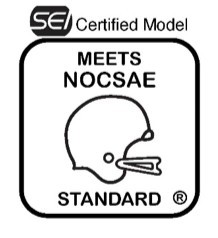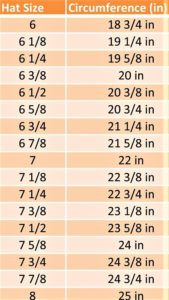Finding and purchasing the right baseball gear for kids can seem a bit overwhelming especially for players just starting out. There are many styles and sizes and knowing which one to buy for your young player can be hit or miss. This post is a quick guideline to save you time and prevent you from wasting money on inadequate or improper equipment.
When our kids are starting out, it’s important to make sure they have the basics, so they can play the game properly and to be safe. It is not necessary to buy top of the line equipment at an early age until you can gauge your child’s continued interest in the game. There is nothing worse than investing hundreds of dollars in baseball gear for you kid, only to have him/her tell you the next season that they don’t want to play.
If your child learns to play the game and truly loves doing it, you’ll know. When that time comes, you’ll have a strategy for adding and upgrading equipment as necessary
Baseball Gloves
Buying the right glove is important for players of all ages. Too small or too big will affect performance and safety. While there are many styles of gloves (and mitts for catchers) whichever one you choose has to fit properly,
To determine the size of the baseball glove, measure in inches from the bottom (or heel) of the glove to the top of the index finger in inches. You can also look on the thumb or the little finger of the glove, the size should be etched there.
Catcher’s mitts are sized differently. The size of the catcher’s mitt is measured in inches around the outside of the entire mitt or, the circumference.
The style of glove is mostly a matter of preference and the position being played. As a rule, outfielders typically use larger gloves because they don’t have to get the ball out as quickly as an infielder who typically uses a smaller glove. A pitcher also will use a larger glove to help hide the ball before delivering the pitch. A player who catches or plays first base will use a specialty glove/mitt.
The following guidelines will ensure that the glove you buy will fit your player properly:
Baseball Bats
Getting your player the proper bat is critical to their ability to adequately hit the ball. There are so many lengths and weights how in the world do you know which bats to get?
There are some important terms to know when you are looking at bats. Length is measured in inches, weight in ounces. Drop is the difference in weight to length. For example, if you have a 29-inch bat that weighs 21 ounces, there is a drop of -8. Lighter bats are good for speed and control and beneficial in preventing injury. Younger players will want to use a lighter bat to get the swing timing under control. Older, stronger players will opt for a heavier bat for power.
A balanced bat has the weight evenly distributed throughout the bat. This helps increase swing speed and improves contact. An end-loaded bat has the weight concentrated in the barrel of the bat. An end-loaded bat is harder to control. This type of bat is preferred by stronger players who do not need a lighter bat to achieve adequate bat speed.
It is recommended that you first talk to the coach or check the league rulebook before investing in a bat.
The chart below will give you guidelines on the length of bats for players of all ages.

Baseball Helmets
Helmets are very important pieces of equipment. As stated by the US Department of Health and Human Services in a CDC Heads Up: “While there is no concussion-proof helmet, a batter’s helmet can help protect your athlete from a serious head or brain injury.”
A helmet is not a piece of equipment that can be overlooked. There are inexpensive helmets, to be sure. But while these helmets will still provide protection, more expensive helmets will almost always have higher impact padding which will do a far better job absorbing impact.
How to determine the correct size helmet: Simply measure all the way around your players head. With a soft tape measure, start at the forehead, just above the eyebrows. Measure all the way around the back of the head, and then back to the forehead. Make sure the tape is straight and sitting just above the ears. If you do not have a tape measure, use a string in the same manner and then measure the string. Helmet sizes will vary from brand to brand, so be sure to check each manufacturer sizing guide to make sure their model will fit your player.
Some important steps in selecting the proper size helmet:
- Make sure your players helmet includes the label that states “SEI Certified – Meets NOCSAE Standards”. This label means that the model you are purchasing has been certified by the Safety Equipment Institute (SEI) and meets standards of the National Operating Committee on Standards for Athletic Equipment (NOCSAE).

- Make sure the helmet fits snugly, with no space between the pad of the helmet and your players head.
- The helmet should be comfortable.
- Never let your player wear a helmet that is cracked or damaged.
- The hole in the ear-flap should line up with your players ear.
- The helmet should sit level on the head, with the bill approximately 1′ above the eyebrows. The bill of the helmet should not tilt up (exposing too much of the forehead), or tilt downward (exposing too much of the back of the head)
Batting Helmet Sizing Guide

Baseball Cleats
When shopping for cleats for your player, there are three things to consider:
- Support/Protection
- Traction
- Comfort
You will first need to choose a style, high-top, mid-top or low top. Each style offers different levels of support. High-tops offer the most support and therefore help to prevent injury to the ankle. High or mid-top cleats offer the most protection. Low tops offer the least protection but are the most lightweight which may be most comfortable for your young player and will enable them to run with greater speed.
The cleat aides in traction. Some leagues allow metal cleats while others forbid them. Metal cleats allow better traction but can be dangerous, especially for younger players. Rubber cleats provide good traction and are safer. Check with your players coach or league rulebook to find out what kind of cleat you should be buying.
Make sure whatever cleat you purchase fits snug. A loose shoe can lead to ankle injury. If your player is between sizes, opt for the size that is snugger. After breaking in, the shoe will expand and therefore, will loosen up.
Make sure your player practices running in the new shoe to make sure it is comfortable and feels good.
Catchers Gear
If you are lucky enough that your player has shown an interest in catching, you are faced with a whole new set of equipment choices to make. Hopefully, your player decided at an early age to try his hand at catching. When players are young, they need protection, but the speed of the pitch and the intensity of the game is much slower, so the cost of the equipment will be relatively inexpensive. As your player develops in the position and the intensity of the game increases, higher impact protection is necessary to keep your player safe.
Items Specific to catching include:
- Catcher’s Mitt
- Face mask
- Chest protector
- knee/shin guards
All the other stuff…
There are several other pieces of equipment to consider as your players interest and commitment to the game increases.
- Batting gloves
- belts
- socks
- protective cups
- athletic underwear
- jaw protectors
- equipment bags / bat packs
- compression sleeves
Are just a few of the items your player will need or want as his love for the game grows. Most of these items are based on style and personal preference. Players who are serious about the game want to dress for success!
Conclusion
The most important thing to consider, whatever gear you are purchasing for your player, is safety. There are so many choices to make. Dozens of products, manufactures and models to choose from. I have tried to give your enough insight to be able to make informed decisions about which gear to purchase for your player throughout his/her entire playing career.
Baseball is a terrific game. For your player to play safely and to maximize his/her playing potential, proper equipment is crucial.
If there is anything I’ve missed or if you have additional comments or questions, please feel free to to leave a comment or email me directly at harley@baseballequipmentforallages.com








2 Comments
terry Lemoine
Harley, Enjoyed reading your post, particularly about bat weights and lengths. Your site looks nice and flows well. Good luck to you. Thanks.
Harley DeLano
Thanks Terry! I appreciate the feedback.